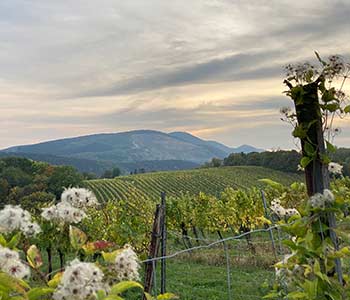
The fundamentals of positioning
Positioning work with winegrowers is one of our favourite tasks. What could be better than to lift their treasure together with them: That which distinguishes them from all the others. That which they do particularly well. Since presence workshops are not possible at the moment, here is a minimal guide.
November 2020
Translated with DeepL
There are about 4,200 bottling wineries in Austria, of which about 1,840 produce more than 30,000 litres of wine a year. They all have to survive on the market, try to succeed in trade and export and increase their brand awareness. In order not to get lost in the multitude of competitors, you have to stand out. But with what?
Therefore, the most important question in the positioning process is: What makes me different from all the others? What is my unique selling point? When you think of famous winemakers, you immediately associate something with them - without thinking much about it: be it a vineyard, a special wine, a grape variety, an outstanding label, a branded wine, an ageing method or perhaps a dazzling personality. These colleagues are positioned.
With a detailed look at your own winery, this is not so difficult. In the joint positioning process, a detailed examination of your personal values followed by an analysis of your strengths and weaknesses would be the first step. Very briefly, a look at your wine strengths is enough for now:
- What is your wine style? How would you sum it up in two sentences?
- What is the wine (vineyard, grape variety, vinification, ...) with which you have had the most success so far? With your customers, at the fairs, in reviews, in restaurants, in the trade?
- Is this the wine you would like to be associated with in the future? If not, which wine would it be? It would definitely be recommended, because you have already gone some way with it.
- What distinguishes this wine? Style …
- What is the right target group for this wine?
- How is it vinified and matured?
- What is the situation in his vineyard? Soil, microclimate, viticulture, ...
After answering these questions, it's time to set your goals and put them into practice:
- What would you like to have achieved in five years? In public opinion, in sales, in growth, in vinification, ...
- And what does this mean for your work as a consequence?
- How can you reach your target group? Website, social media, newsletter, press work, which markets, trade partners, fairs, competitions, (online) tastings do you need for this, in which restaurants do you want to be listed, ...
- And what should your corporate design look like for this target group? Logo, label, bottle, case, website, folder, ... An analytical look by your partners often helps.
- It is also important to take a look at the overall assortment. Is it coherent or too much of a good thing and should be cleaned up? In most cases, less is more. Scarcity helps the positioning of the winery, and your trade partners will also be gratful.
And last but not least: Your story! How would you or your best customer or your best friend tell it in two minutes? It can be personal here! No, it has to be personal. The more emotional, the more interested people will listen to you and the better they will remember.
You can now tackle all of this point by point. But we would also be happy to support you. Feel free to contact us at any time at: office@sylvia-petz.at




